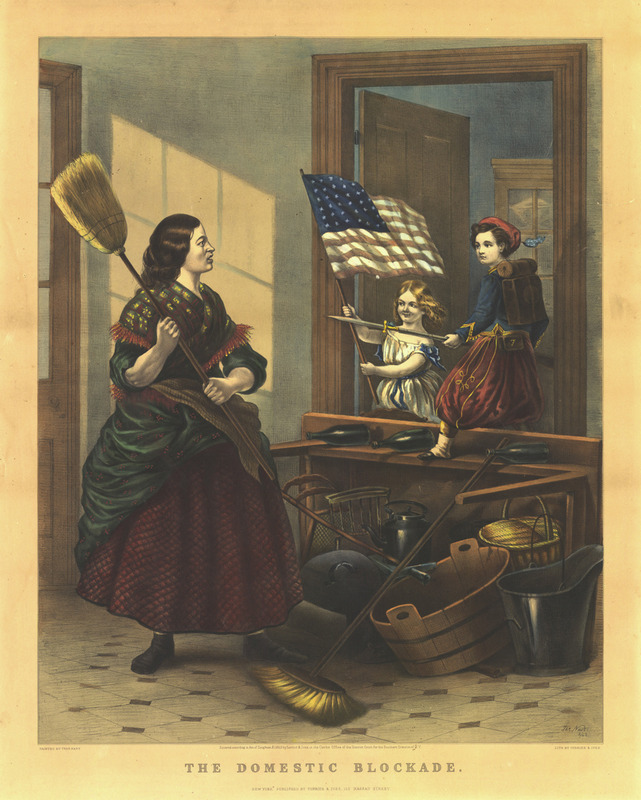The Domestic Blockade.
 During the Civil War, prints for the northern home market often featured sentimental images of women and children that supported the war effort. This playful print, based on a sketch by Harper's Weekly illustrator Thomas Nast and published by Currier & Ives, presents a household servant confronting two children who have built a fort out of kitchen utensils. The girl waves an American flag while the boy brandishes a toy gun (with a real-looking bayonet), and is dressed in the flamboyant Zouave uniform, originally worn by French soldiers in North Africa, which was popular among some volunteer Civil War regiments. The hapless, red-haired servant in this domestic scene may be Irish—suggesting that the scene may be a sly comment on Nast's part about the New York Draft Riots of July 1863 (the working class rioters were identiied as being largely Irish-born or of Irish descent). This print was one of several that Nast created for Currier & Ives featuring humorous scenes of combative children on the home front. Shortly after this print was published, Nast produced a carte-de visite version designed for family albums.
During the Civil War, prints for the northern home market often featured sentimental images of women and children that supported the war effort. This playful print, based on a sketch by Harper's Weekly illustrator Thomas Nast and published by Currier & Ives, presents a household servant confronting two children who have built a fort out of kitchen utensils. The girl waves an American flag while the boy brandishes a toy gun (with a real-looking bayonet), and is dressed in the flamboyant Zouave uniform, originally worn by French soldiers in North Africa, which was popular among some volunteer Civil War regiments. The hapless, red-haired servant in this domestic scene may be Irish—suggesting that the scene may be a sly comment on Nast's part about the New York Draft Riots of July 1863 (the working class rioters were identiied as being largely Irish-born or of Irish descent). This print was one of several that Nast created for Currier & Ives featuring humorous scenes of combative children on the home front. Shortly after this print was published, Nast produced a carte-de visite version designed for family albums.URL: http://cdm15387.contentdm.oclc.org/cdm/singleitem/collection/p15387coll2/id/51/rec/30
Creator: Thomas Nast
Source: North Jersey History and Genealogy Center, The Morristown and Morris Township Library
Publisher: New York: Currier & Ives
Date: 1863



